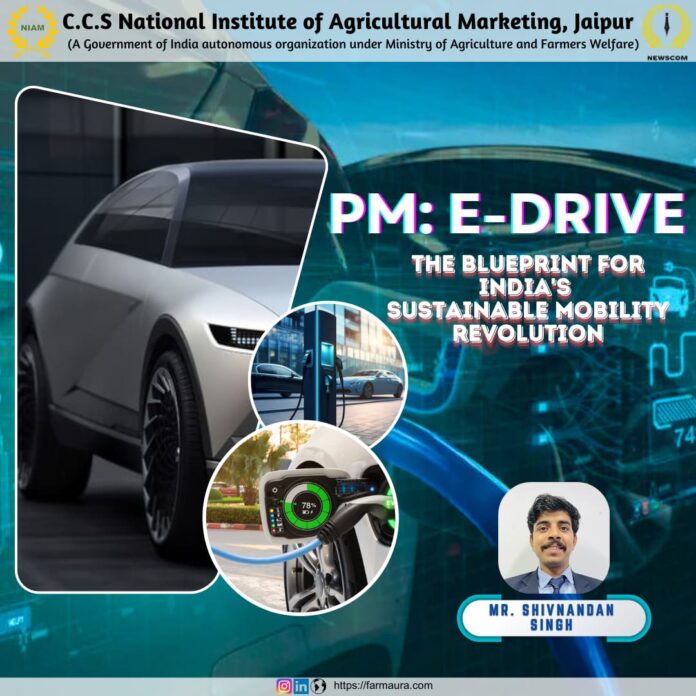Adopting e-mobility and e-vehicles is crucial for addressing emission concerns, promoting sustainable technology, and reducing reliance on fossil fuels. Additionally, it aims to reverse the effects of climate change, foster domestic manufacturing capabilities, and encourage self-sufficiency. The e-vehicle industry in India is currently undergoing a rapid and dynamic transition.
The PM Electric Drive Revolution in Innovative Vehicle Enhancement (PM E-DRIVE) is a groundbreaking initiative by the Government of India, set to transform the country’s transportation landscape. The PM E-Drive Scheme replaces the earlier FAME (Faster Adoption and Manufacturing of Hybrid and Electric Vehicles) Scheme, which began in April 2015. Fame Policy, which lasted nine years in two phases, supported 1,321,800 electric vehicles with subsidies totalling INR 115 billion before ending on March 31, 2024.
With a substantial budget of Rs. 10,900 crores, this scheme runs from October 1, 2024, until March 31, 2026, fostering a robust EV ecosystem while aligning with the nation’s goal of achieving net-zero carbon emissions by 2070.
The PM E-DRIVE scheme aims to shift the country from fossil fuel-driven vehicles to electric vehicles, reducing pollution. It includes financial incentives, improved charging infrastructure, and support for the electric vehicle manufacturing sector. It will contribute to environmental sustainability, support India’s Aatmanirbhar Bharat vision, and lead the nation toward cleaner, greener transportation.

Source: FADA Research
The PM E-DRIVE scheme is to be implemented through the following key components:
- Electric Two-Wheelers (e-2Ws):
The scheme promotes approximately 2.48 million e-2Ws. Incentives will be provided for models equipped with advanced batteries for both commercial and private use. - Electric Three-Wheelers (e-3Ws):
Around 320,000 e-3Ws, including e-rickshaws and L5 vehicles, will be supported. These incentives will apply to commercially used e-3Ws with advanced battery technology. - Electric Ambulances:
Rs. 500 crore is earmarked for the promotion of electric ambulances, improving patient transport. Eligibility criteria will be developed in collaboration with the Ministry of Health and Family Welfare. - Electric Trucks:
Rs. 500 crore is set aside to incentivize electric trucks, with vehicles required to have scrapping certificates from approved centres. - Electric Buses:
The initiative allocates Rs. 4,391 crores to introduce 14,028 electric buses in major cities, prioritizing cities that scrap older buses. - Charging Infrastructure Development:
The scheme aims to set up 22,100 fast chargers for e-4Ws, 1,800 for e-buses, and 48,400 for e-2Ws and e-3Ws, with an outlay of Rs. 2,000 Crores boosting user confidence across India, ensuring comprehensive charging infrastructure. - Testing agencies upgradation: The initiative will upgrade and modernize testing agencies under the Ministry of Heavy Industries (MHI). By equipping these agencies with new and emerging technologies, we will actively promote green mobility. The upgradation of testing agencies with an outlay of Rs.780 crores under the aegis of MHI has been approved.

Incentives for Electric Vehicle Adoption:
The scheme prioritizes demand incentives for e-2Ws and e-3Ws to drive adoption registered for commercial use. All EVs must be registered under the Central Motor Vehicles Rules (CMVR), 1989, to qualify for these incentives. Incentives are limited to one vehicle per category per individual. Non-government vehicles with advanced batteries are the only ones that qualify for incentives, resulting in lower purchase costs for consumers.
- Incentive Structure:
- FY 2024-25: Rs. 5,000 per kWh for e-2Ws and e-3Ws.
- FY 2025-26: Rs. 2,500 per kWh.
- Capped at 15% of the ex-factory price or the incentive amount, whichever is lower.
The scheme also supports the development of EV charging infrastructure, and e-vouchers will streamline the reimbursement process for manufacturers, encouraging widespread EV usage across India. Flexibility of funding for the establishment of charging infrastructure, to the extent of 100% of the cost (including upstream power infrastructure) of the project, may be made available for promoting electric mobility.
Conclusion
The PM E-DRIVE Scheme represents a crucial step toward addressing environmental pollution and fuel security while fostering sustainable transportation. By encouraging the adoption of electric vehicles and developing supporting infrastructure, the initiative is poised to attract substantial investment, create jobs, and pave the way for a cleaner, more sustainable future for India. Additionally, it will create significant job opportunities throughout the value chain, including positions in manufacturing and the establishment of charging infrastructure.

